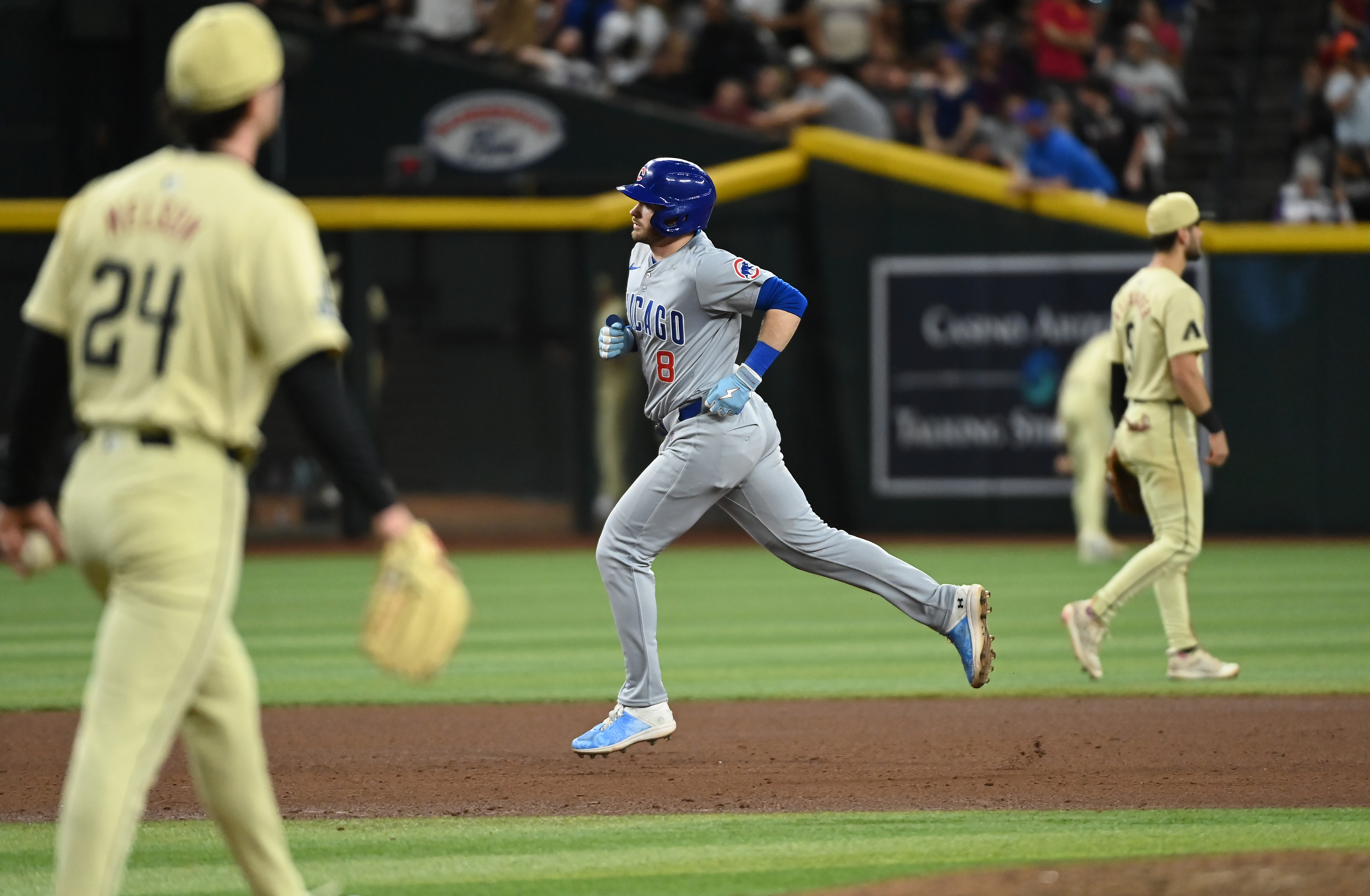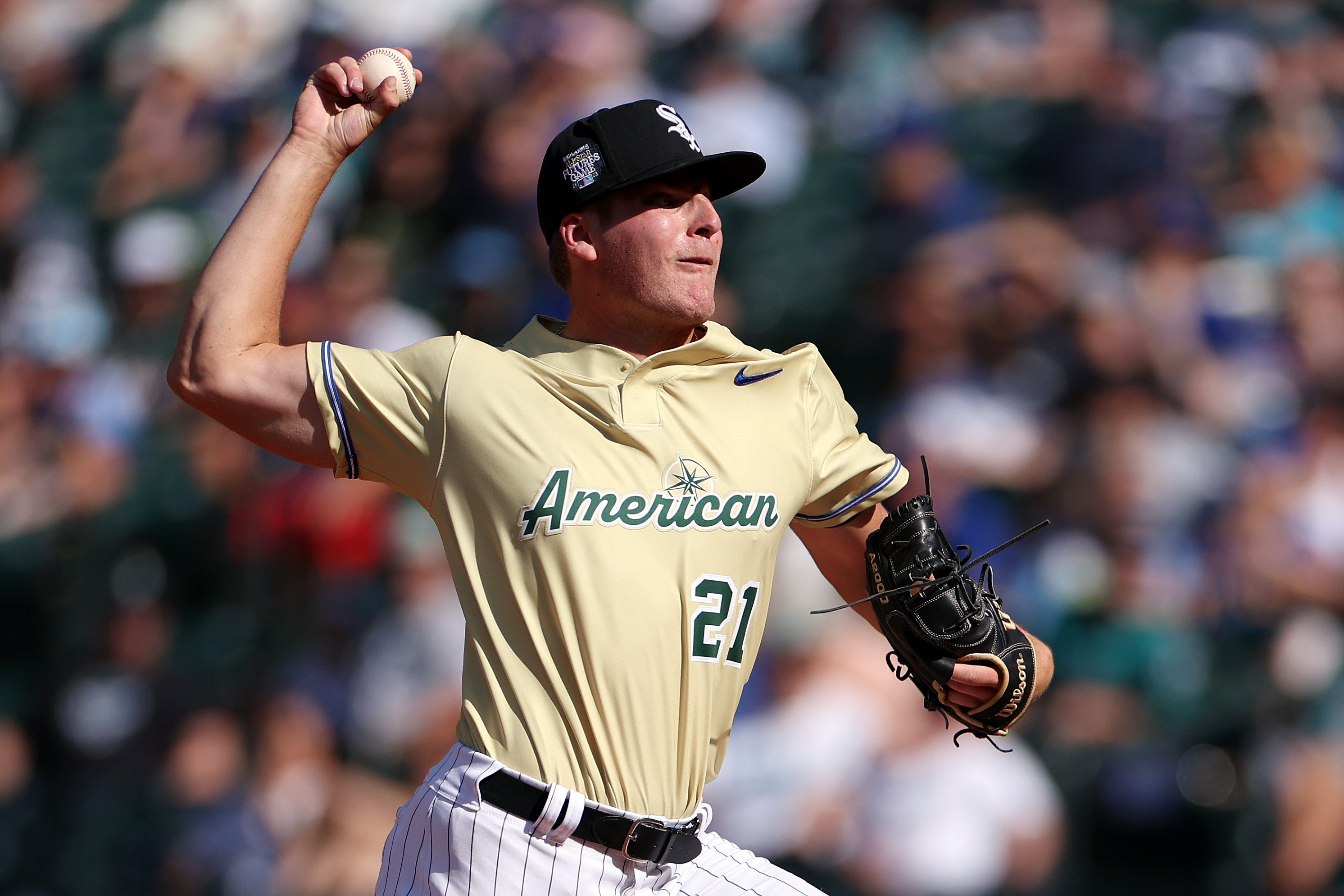
After a spectacular outing in his last start, Kyle Hendricks is on the mound again tonight against the rival Cardinals. Although bitten more often than usual by the homerun this year, last time out, he recovered quickly after a first inning leadoff homerun by Josh Harrison of the Pirates. The result of this recovery was a line score of 5 IP 3 H 1 ER 2 BB 4Ks.
He gave up two hits over five innings after the homerun. No runs.
But as the National League has it, Hendricks was due to hit in the bottom of the fifth inning when the Cubs had two runners on base, and manager Joe Maddon seeing the cavalcade of lefties coming up for the Pirates in the 6th, elected to pinch hit for the right-handed pitching Hendricks. He reasonably explained the elements at play, considering offense and defense in his decision.
It did not work out for the Cubs as the numbers would have suggested. The lefty-lefty matchup of Duensing v. Pirates imploded in the sixth inning. Four runs later, the Cubs were in a deep hole. Baseball happened.
We know hindsight is crystal clear. Yet we want to be able to look to the future, and apply that hindsight effectively. There will be many moments tonight when Maddon will have to weigh key factors to decide Hendricks’ fate for the good of the team.
Today, the numbers are king in baseball’s chess game. There are many other pieces on the board, but as the information pours in that allow us to make more informed decisions, we cannot ignore it. Similar to instant replay, once the technology was there, available to all of us, we had to use it in a way that enhances the game and our chances to get the call right. We could no longer pretend millions of fans did not have cell phones to see the right call with their own eyes (or could see on the big screen), just as we cannot deny our ability to know the difference between high and low percentage moments in a baseball game with all of the information at our disposal. We have data out to many decimal places now on just about everything.
Hendricks supported Maddon’s choice to pinch hit for him. He did not provide juicy controversial quotes or play into the false bravado of “you need to rip the ball out of my hand every game” storyline. Even if he wanted the chance to continue the roll he was on over the five innings after that leadoff homerun, which I am sure he did. Today, players are armed with information which often explains any decision. In theory, it makes it not personal.
MLB
We ask ourselves all of the time how the numbers and the soul of the game will dance together. If one will be the enemy of the other or will work together in some sort of artistic truce. They will always be at odds in some way given new metrics are coming in every year. We re-think our outfield routes, our use of bullpen, the role of a starter, the value of a stolen base. It is all about finding higher percentages of success or “playing the percentages.”
Yet if someone is telling us that the chance of rain is 55 percent, is that really telling us anything on a practical level? I suppose it is good to know it may rain even on a coin flip, but it is hardly a certainty. What do we make of 45 percent odds on weather to pack an umbrella? The challenge is there are many other pieces of information in baseball that collide with each other in this near 50/50 way. Almost as if you have four weather seasons in every game. It could rain, snow, hail, be 95 degrees, flood, or we could have unbearable wind.
If they were all at different low percentage chances and even overlap, do you carry sunscreen and snow boots? At some point the more hedges, the more you have to protect against (and carry a suitcase of defenses) or you may not bother leaving home at all. Do you take out Hendricks and hit LaStella and bring in Giminez and give Morrow an extra day’s rest and ask Strop to pitch three days in a row? All of these decisions and more, impact each other at some point.
The percentages we play in baseball are based on knowledge that looks both forward and backwards at the patterns and matchups. We use it to make a decision. The old school gut is slowly getting quantified away, so we can use our head much more often and let our gut toss and turn without any real power.
Yet, playing those higher percentages is what is best for the team, what is best for the team’s odds at a given moment. It tends to ignore the idea that a player overcoming a low percentage situation is often what propels him to that next tier of confidence, allows him to build on it, individually. We all remember when we overcame the odds, a time that induced greatness when we may not have known it was in us. So we pitched that extra inning with our arm hanging, we faced that righty nemesis that gave us fits and (spoiler alert) hit that triple, we stole that base we had no business stealing and ended Red Sox futility, we returned as a backup catcher and hit a homerun off of Andrew Miller in the World Series, and we changed everything because no one saw it coming. No one “predicted” it.
When as a Cub, I faced Braden Looper of the Marlins in Game 3 of the NLCS in 2003, I had faced him before as a Phillie. There was nothing about him that would suggest I should have any success against him. He was a sinkerball pitcher, which usually meant I would swing over the ball, or foul one off of my shin. But it was extra innings, our bench was thin, and even though I had not started a game in weeks, I was granted this low percentage opportunity.
I was 1-for-9, with one strikeout against Looper going into the at bat before I hit that triple and I assure you, many of those nine at bats were not pretty. I was not supposed to get a hit let alone an extra-base hit.
Sure, let’s use the information at hand, dig deeper in the game and the numbers that we love about it. It helps us weigh the odds more precisely. Baseball fans love to count. We love to add and subtract. But we also like to remember when David beat Goliath, and before we reduce every moment into Calculus 101, let’s also remember that everyone in the big leagues is a low percentage anomaly. They climbed nearly impossible mountains to be a major league baseball player. To get to where they are, it took walking outside without an umbrella nor a raincoat on a day when it had a 95 percent chance of rain. Maybe that day it still did not rain, or maybe it did and you just decided to dance anyway.


